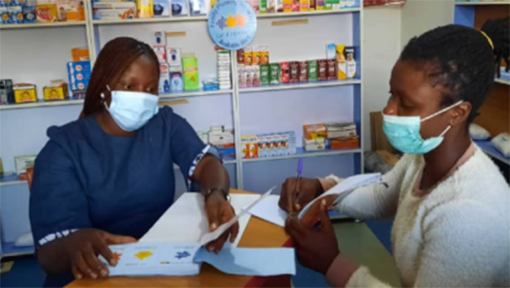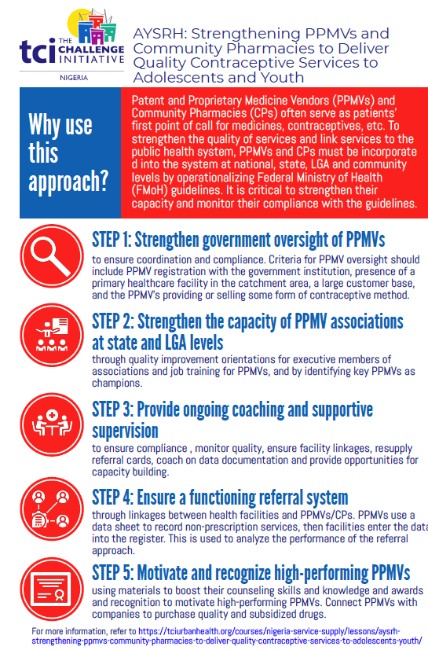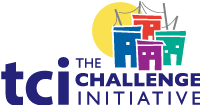Nigeria Toolkit: AYSRH Services & Supply
- Home
- Help and Support
- Close
- Toolkits
- Global Toolkit
- AYSRH Toolkit
- Hub Toolkits
- Core High-Impact Practices
- Gender Essentials Mini Course
- Close
- Resource Collection
- Community of Practice
- Coaching
- Log In/Register
- My Profile
- English
Strengthening PPMVs & Community Pharmacies to Deliver Quality Contraceptive Services to Adolescents & Youth
What is it?
 In Nigeria, Patent and Proprietary Medicine Vendors (PPMVs) are a major source of health services and medicines; however, their services are not well-integrated into the public health system. The PPMVs and community pharmacies (CPs) are very accessible to the community and often serve as the first point of call for medicines, some contraceptives, hygiene products, etc. Strengthening the quality of services, especially for adolescents and young people (15 to 24-years-old), provided by PPMVs and CPs and linking their services to the public health system will go a long way in ensuring the health and reproductive development of adolescents and youth.
In Nigeria, Patent and Proprietary Medicine Vendors (PPMVs) are a major source of health services and medicines; however, their services are not well-integrated into the public health system. The PPMVs and community pharmacies (CPs) are very accessible to the community and often serve as the first point of call for medicines, some contraceptives, hygiene products, etc. Strengthening the quality of services, especially for adolescents and young people (15 to 24-years-old), provided by PPMVs and CPs and linking their services to the public health system will go a long way in ensuring the health and reproductive development of adolescents and youth.
To leverage the opportunity that PPMVs and CPs present in the health sector, their engagement must be systematically incorporated into the system at national, state, LGA and community levels by operationalizing Federal Ministry of Health (FMoH) guidelines. It is also critical to strengthen their capacity and monitor their compliance with the guidelines and build linkages between PPMVs and health facilities.
The FMoH recognizes the important role that PPMVs can play in the delivery of modern contraceptive services and recommends that PPMVs should motivate, counsel and refer clients for contraceptive services, supply non-prescription contraceptives (i.e., condoms and emergency contraception) and resupply oral contraceptive pills (FMoH, 2009). According to Nigerian pharmacy laws, PPMVs are prohibited from selling and administering injectable contraceptives due to a lack of formal training in injectable contraceptive services (NPC, 2008 & 2003).
TCI’s AYSRH strategy acknowledges the important roles that both clinical and non-clinical providers play in providing contraceptives information and services to adolescents and young people.
Why is it important?
- PPMVs are a preferred source for young people for their contraceptive needs. According to TCI’s flexitrack surveys conducted in 2019, between 30.95% – 35.71% of young people in Ogun, Niger and Plateau states reported that they prefer to get their contraceptives from PPMVs and community pharmacies.
- PPMVs and CPs with the right requisite skills and competence can improve access to quality contraceptive information and services for adolescents and young people in urban poor cities. In addition, improved referral linkages will increase access to the full basket of contraceptive choice by young people.
What are the steps to implementing this approach?
Step 1: Strengthen state government oversight, ensuring coordination and compliance to guidelines on PPMV operations
Strengthen the state agency/department responsible for compliance to the FMoH guidelines on the operations of PPMVs and community pharmacies on the provision of contraceptive services and information. The state agency/department responsible for ensuring compliance of PPMVs operations are state institutions and state and LGA PPMVs associations. For example, in Delta state, the department responsible is the Department of Pharmaceutical Services of the State Ministry of Health, while in Niger state, it is the Public Health department of the State Ministry of Health
To strengthen the coordination and ensure compliance of PPMVs the following were done:
- Establish and/or strengthen the partnership/relationship between the state and of the PPMVs associations at the LGA and State levels. Engage the Adolescent Health and Development Officer (AHDO), LGA officers, National Association of Patent Medicine Vendors (NAPMED) at the LGA level with support from, civil society organizations (CSO) o map existing PPMVs based on criteria established by the state. At minimum, the criteria should include: (1) PPMV registration with and association and relevant government institution, (2) Presence of a focal primary healthcare facility within their catchment area to enable a robust referral system and (3) Large customer base to ensure demand by adolescents and youth (4) PPMVs providing/selling some form of contraceptive method.
- Develop a checklist to conduct supportive supervision on this AYSRH intervention to registered PPMVs.
- Strengthen the reporting of PPMVs on the facility and state records.
Step 2: Strengthen the capacity of PPMV association at the state and LGA levels
- Conduct orientation to executive members of the associations, State and LGAs on quality improvement to carry out periodical supportive supervision to assess and monitor PPMV AYSRH interventions as well as on the job training and coaching for the PPMVs
- Work with states to ensure that NAPMED at the LGA level conducts at least biannual supportive supervision on the operations of their members to ensure compliance with FMoH guidelines holistically, not just on providing family planning services.
- Identify key PPMVs and Community Pharmacies Executives to engage as champions/influencers.
Step 3: Strengthen the capacity of PPMVs and ongoing coaching support through regular supportive supervision
- Once the PPMVs are identified that meet the criteria in Step 1, invite them to an orientation on the FMoH guideline to make sure that they are in compliance, understanding adolescents and youth sexual and reproductive health needs, counselling young people, issues of provider bias, consent as well as the issues around confidentiality. Conducting regular supportive supervision visits for this activity will help to verify if they are in compliance for family planning service delivery, while the PPMV association’s supportive supervision will ensure overall compliance with FMoH guidelines.
- Continue to coach and train selected PPMVs on contraceptive information, referral services, refiling, simple client documentation and reporting.
- Conduct supportive supervision to assess and monitor provision of service and information to young people by the PPMVs. This is done either monthly or on a quarterly basis and by the LGA RH/FP Coordinator with support from CSOs implementing in those communities where PPMVs are located. The aim of these visits are to monitor quality of the service and information provision, compliance to FMoH guideline and association protocol of operation, ensure linkages with the facility, address any problems that the PPMV may be encountering, resupply of Go-Cards (referral card) and coach on data documentation. In some cases, the LGA RH/FP Coordinator and CSOs uses the visits for capacity building and coaching on demand using the on the job training manual to improve skill of non-clinical providers.
Step 4: Strengthen the linkages between PPMVs/Community Pharmacists and health facilities to ensure a functioning referral system
- Strengthen networking between PPMVs, CSOS and health facilities in each of the supported LGAs to enhance reporting
- Coach state, LGA, CSO and PPMVs/community pharmacists on documentation and reporting of PPMVs FP and AYSRH interventions.
- Ensure the use of referral cards (Go-Card) by the PPMVs.
- Simplify data capturing tool/register for documentation.
- State and LGA FP and AHDO provide referral documentation between PPMVs and Community Pharmacies (CPs) and state public health facilities. The PPMVs will mark on a data sheet whatever non-prescription services that they provide. This data sheet is provided to the State and LGA FP and AHDO so that they can give it to the facility to be entered into its register. The register is collected monthly supported by TCI for collation and analysis of the performance of the approach using the referral from PPMVs to the public facilities in the catchment areas.
Step 5: Motivate and recognize high performing PPMVs
- Motivate high performing PPMVs through recognition and awards.
- Provide the PPMVs with IEC materials that will boost their counseling skills and knowledge.
- Connect them with subsidized FP commodities according to the range of commodities they can sell or services they can render.
- Connect the PPMVs with pharmaceutical companies where they can purchase quality and subsidized drugs.
Expected outcomes
- Increased access to quality modern contraceptive for young people ages, 15-24 years
- Improved capacity of PPMVs and community pharmacists to provide quality contraceptive information and services to young people ages, 15-24 years
- Improved quality of family planning information and services provided by non-clinical outlets
Monitoring processes
- PPMV monthly reporting tool and referral forms for PPMVs and CPs at the facilities
- Monitor family planning service provision at the PPMVs and CP using referral card (Go-card) at public facility
- Routine review of referral cards (Go-cards) from PPMVs and CPs in the focal primary healthcare facilities
- Supportive supervision of PPMVs and CPs checklist at the LGA and State levels
Success indicators
- Percentage of young people counseled on contraceptives by PPMVs and CPs
- Percentage of family planning referrals from PPMVs and CPs
- Number of PPMVs trained on FP referrals
Challenges
- PPMVs are not typically aware of the full range of services offered by facilities. To address this, include PPMVs in whole-site orientation sessions carried out by the LGA FP/RH Coordinator in nearby public health facilities to raise PPMVs’ awareness of services offered, improve the knowledge about contraceptive services and facilitate connections with facilities for a stronger referral mechanism.
- Proper documentation of the source of referral is critical. It is not just a tick-off box. Service providers at the facility require coaching to ensure that they are intentional in reflecting this information in the register and noting specifically where the Go-Card comes from whether it was given during an outreach or in-reach or by a PPMV.
- Cost of printing the Go-Cards can be expensive and currently the Go-Cards are specific to contraceptive services. Under the CHIPs program, the vision is for a simple referral card for all health services. However, this is not up and running just yet.
Sustainability tips
Strengthening the system:
- CSOs are often engaged in various programs with other CSOs/CBOs (Community Based Organisations), so they can move quickly in supporting the state and LGA to carry out this approach. They serve as an extension of the LGA human resources team in helping to conduct monthly or quarterly supportive supervision, mobilization of contraceptive services, and monitoring and tracking of referrals.
- In addition, the AHDO supervises work of the CSOs and PPMV as it relates to AYSRH programming and making sure that the programming meets the needs on the ground. When CSOs go for supportive supervision visits to PPMVs, they go with the AHDO.
- AHDO RH/FP Coordinator and CSOS are able to supervise the PPMVs.
- QIT team is also able to provide support to the system as a whole. It can serve as an intermediary between government and the community when challenges arise.
Ensuring funding of activities:
- Ensure activities with PPMVs, such as the provision of services, supportive supervision and referral mechanism, are included in the state’s Costed Implementation Plan and Annual Operational Plan.
TCI APP USERS PLEASE NOTE
You will only receive CERTIFICATES by email – when earning a score above 80% – and will not be able to view or print a certificate PDF from the TCI app.
Test Your Knowledge
Earn a Certificate
Quiz Summary
0 of 5 Questions completed
Questions:
Information
You have already completed the quiz before. Hence you can not start it again.
Quiz is loading…
You must sign in or sign up to start the quiz.
You must first complete the following:
Results
Results
0 of 5 Questions answered correctly
Your time:
Time has elapsed
You have reached 0 of 0 point(s), (0)
Earned Point(s): 0 of 0, (0)
0 Essay(s) Pending (Possible Point(s): 0)
Categories
- Not categorized 0%
- 1
- 2
- 3
- 4
- 5
- Current
- Review
- Answered
- Correct
- Incorrect
-
Question 1 of 5
1. Question
Including PPMVs in a whole-site orientation serves to:
CorrectIncorrect -
Question 2 of 5
2. Question
PPMVs and community pharmacies are very accessible and in some cases preferred by adolescents and youth for contraceptive needs.
CorrectIncorrect -
Question 3 of 5
3. Question
The goal of monthly or quarterly supervision of PPMVs includes:
CorrectIncorrect -
Question 4 of 5
4. Question
How useful did you find the information and/or tools presented on this page? Please write your response in the box below using one of the following phrases: Very useful, Useful, Somewhat useful, Not useful.
Feel free to comment on why you made that choice.
-
This response will be awarded full points automatically, but it can be reviewed and adjusted after submission.
Grading can be reviewed and adjusted.Grading can be reviewed and adjusted. -
-
Question 5 of 5
5. Question
How do you intend to use the information reviewed and/or tools that you accessed?
-
This response will be awarded full points automatically, but it can be reviewed and adjusted after submission.
Grading can be reviewed and adjusted.Grading can be reviewed and adjusted. -




